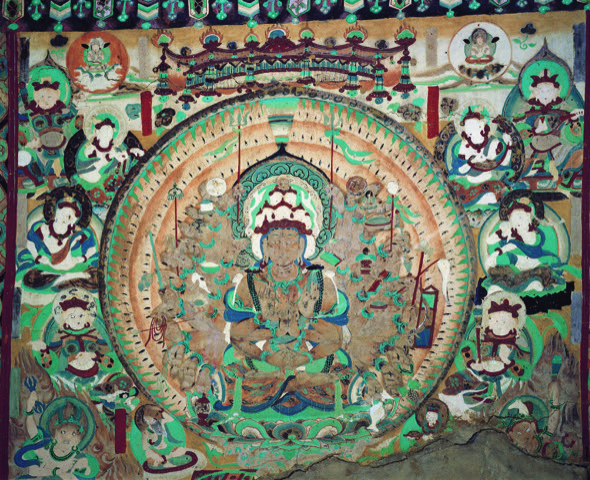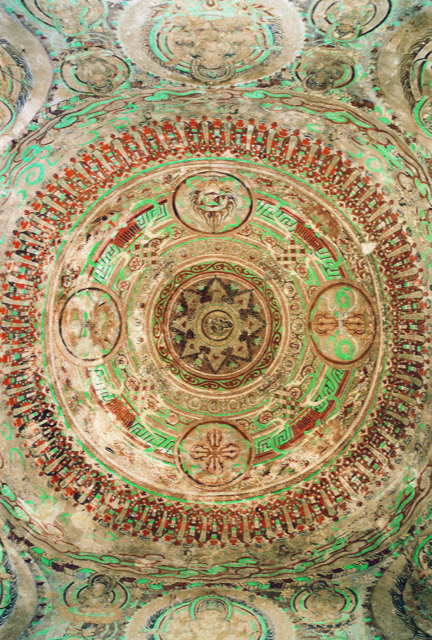Conference at 6 PM, at Maison de l’Asie, 22 avenue du président Wilson, 75016 PARIS, by Dr Zhao Xiaoxing, Dunhuang Academy.
This lecture focuses on the esoteric images of Mogao Caves, which are divided into three periods: early, middle and late. The early period, from the 7th to the 8th century, was the beginning of Han esoteric religion. During this period, Dunhuang murals depicted paintings of the Eleven-face Avalokitesvara and the Usnisavijaya dharani sutra. In the late 8th century, the images of Thousand-hand Avalokitesvara, Amoghapasa-Avalokitesvara and Cintamanicakra-Avalokitesvara became a major subject in Mogao Caves. The middle period, from the end of the 8th century to the mid-11th century, was the heyday of the Han esoteric Buddhism. At the end of the 8th century, the Great Eight-Bodhisattva mandala came into existence in Cave 25 in the Yulin Caves. In the mid-9th century, the Thousand-bowls Manjusri mandala and the Twelve-Deva Mandala were introduced to Cave 361 in Mogao Caves. In the late 9th century, the Great Eight-Bodhisattva mandala and the Vajrasattva mandala were drawn symmetrically in Cave14 of the Mogao Grottoes. Because two great Kashmir monks, Danāpāla and Dharmabhadra had stayed in Dunhuang in 977A.D., thus, a distinct esoteric sanctuary known as “The Lokapāla Hall” was constructed in Dunhuang. The latest period, from the mid-11th century to the mid-14th century, Sino-Tibetan Buddhism emerged with a large number of new themes, the typical renewal Tantric cave, Cave 465 was built in Mogao caves.


